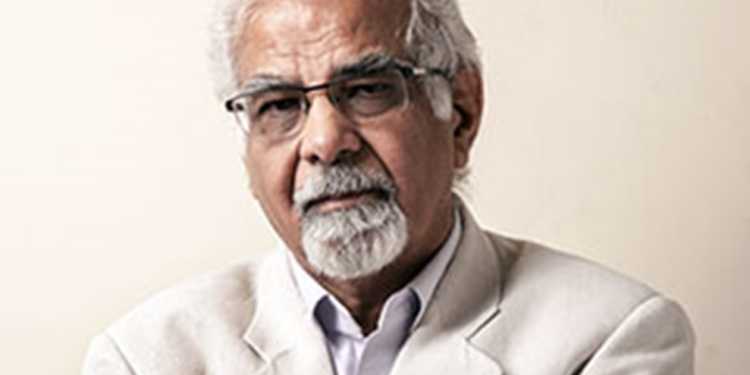The Narendra Modi-led BJP has finished three years and I have two words to best describe Modi’s tenure from 2014-17 and beyond: Structural Change. This structural change has occurred across various dimensions, and it is continuing. Whether it be economics, politics, social politics, foreign policy, you name it — a distinct stamp is being placed on India. Let us examine some of these dimensions.
Beginning with the macro-economy: In terms of growth and inflation, the combination suggests that the Indian macro-economy today is the best it has ever been. UPA-I had held the record for best macro performance across the dual indicators of GDP growth and inflation. For the first three years of the UPA regime, GDP growth averaged 8.7 per cent per year, and inflation (GDP deflator) averaged 5.4 per cent. The inherited data for 2003-4 was a GDP growth of 8.5 per cent and inflation of 3.6 per cent.
Modi Government inherited an economy not in the best possible shape — GDP growth of 6.5 per cent and inflation of 6 per cent. (Incidentally, CPI inflation was 9.4 per cent in 2013-14).
The last three years, GDP growth has averaged a healthy (but still well below potential) 7.5 per cent and an average GDP deflator inflation rate of only 2.9 per cent. (Hush — don’t tell the inflation professionals at the RBI and the Monetary Policy Committee who think that inflation is roaring back to, if not already at, double digits).
So, you decide — would you prefer 7.5 per cent growth and less than 3 per cent inflation, or growth 1 percentage point (ppt) higher and inflation 2.4 ppt higher? As we know, high inflation may purchase growth in the short-run, but often comes with slowing growth, and higher inflation, in subsequent years.
But macro-economy is not just growth and inflation — it is also about jobs. Ministers in the Modi government have admitted to the possibility that India is experiencing jobless growth; that is what the available data shows. Thankfully, the government has set up a star-studded committee of professionals to examine the data on jobs and their report is keenly awaited. Till then, we should reserve judgment. My own personal view is that the NSS data may not be capturing all the elements of job growth. But if a comparison is to be made with the UPA-I period, let it be known that in that period of average 8.5 per cent GDP growth, in 2004-2009, NSS job growth averaged only 0.8 per cent per annum.
Alongside, economic reforms: Did we ever think that the ruling government of the day would attack two of the holiest cows in India — the sale of Air India and the introduction of an agricultural income tax? The Modi government has been more willing to talk economic reform — and enact reform — than any government in Indian history. The set of economic reforms already in place in India (the list is long and expanding): Reforms in agricultural marketing and agricultural insurance, the introduction and expansion of direct benefits transfer and the corresponding decline in PDS and NREGA corruption, a bankruptcy code, the beginning of direct tax reform (a reduction in corporate taxes with a promise of a major direct tax reform next year), GST, and now, the soon to be comprehensively attacked (and resolved?) NPA problems of banks. These policies add up to more far-reaching reforms than the cumulative economic reforms introduced in India between 1991 and 2014.
In other words, the last three years have brought about more reforms than the sum total of the previous 25 years. Plus, demonetisation: Of course, any discussion of the Modi government is incomplete without reference to that greatest “experiment” of all — demonetisation. As I have consistently forecast over the last several months, that contrary to naysayers (almost the entire in-the-box economic fraternity), demonetisation has not had a very large negative short-term effect on the Indian economy. Just released CSO data indicates a decline in GVA (gross value added, broadly comparable to GDP) growth from 7.9 per cent in 2015-16 to 6.6 per cent in 2016-17. However, as several analysts note, a slowdown in Indian growth was already present in the July-September 2016 quarter — that is., before the introduction of demonetisation on November 8.
There will be PhD theses written, and several of us will continue evaluating the effects of demonetisation well into the future. As it should, and must, happen. In terms of the short-run, there is a negative demonetisation effect on GDP, possibly amounting to as much as 0.5 per cent. This negative effect is much lower than the doomsday forecasts of a 2 per cent, and more, decline in GDP growth.
More on this at a later date, but a discussion of demonetisation would be incomplete without reference to its extremely positive effects on tax evasion. With a 1.3 per cent lower aggregate GDP growth, personal income tax payments were up 25 per cent in 2016-17, compared to a growth of less than 9 per cent in the previous two years. Like the French Revolution, five months is too short a time to do a benefit/cost analysis of as large a structural change as demonetisation. But there is little doubt that in a few years from now, demonetisation will make it to the history books as one of the most successful economic “experiments” ever undertaken.































